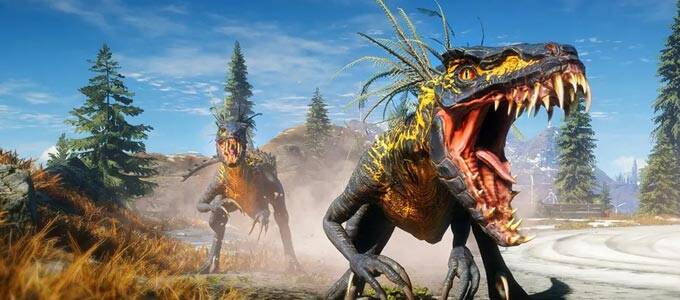Dinosaurs dominated three geological eras, a total of 165 million years.
During the Triassic and early Jurassic periods, dinosaurs had not yet become a very powerful species and almost completely dominated the entire animal evolution process. By the end of the Jurassic period, very large sauropods had become the largest creatures that had ever existed on this earth. The end of the Jurassic period was the peak "golden age" of their dominance of the earth. In terms of diversity, intelligence, and size, they far surpassed other creatures of the same period. How did the most legendary species in the history of the earth appear and how did it rise?

Before the appearance of dinosaurs, lizard-type species had appeared on the earth. Although their size was not as large as that of dinosaurs, they had certain advantages compared to other animals at that time. Paleontologists believe they were the prototypes of later dinosaurs. Lizards appeared in the Carboniferous Period (363 million to 290 million years ago), several geological eras before the Triassic. During that era appeared what is believed to be the world's earliest reptile: the West Lothian lizard. By the time of the Permian, a geological era before the appearance of dinosaurs, the types of reptiles gradually became more diverse, and their shapes began to resemble those of the earliest dinosaurs. The Permian was a relatively arid era, and deserts were very common. During the same era, group-living lizards such as Archosaurus and Dimetrodon were active in desert oases. In the late Permian, two different trends emerged in the evolution of organisms, both of which had a profound impact on the history of the earth. One trend is called dinosaurs and the other is called mammals.
Just when the evolution of the Earth was in full swing, an asteroid larger than the meteorite that ended the age of dinosaurs 65 million years ago hit the Earth at the end of the Permian. The impact caused the extinction of most species, but it also became a catalyst for the emergence of dinosaurs. During the Permian period, the real dinosaurs were about to make their official debut. Herasaurus was one of the earliest dinosaurs to appear. It was small in size and very agile, and it quickly became the big winner in survival games. At the end of the Permian, Coelusaurus appeared, which was the prototype of many carnivorous dinosaurs and birds. Soon in the Jurassic period, the early Jurassic herbivorous dinosaurs began to evolve in size, and their size advantages could help them escape the pursuit of carnivorous dinosaurs. Hence the emergence of sauropods; the huge sauropods pushed the evolution of dinosaurs to its highest peak. Another reason for the emergence of giant sauropods is the climate. According to geological records, the late Jurassic was warm and humid, and dinosaurs could grow to more than 30 meters in length. In addition, carnivorous dinosaurs have also become larger, more aggressive and threatening; for example, Allosaurus in North America. In addition, very special dinosaurs, such as the feathered Sinosaurus, began to follow the path of bird evolution. Under the influence of climate and living conditions, the end of the Jurassic was the heyday of the dinosaur age.
animal tags: Dinosaur Triassic Jurassic lizard Herasaurus reptiles
We created this article in conjunction with AI technology, then made sure it was fact-checked and edited by a Animals Top editor.